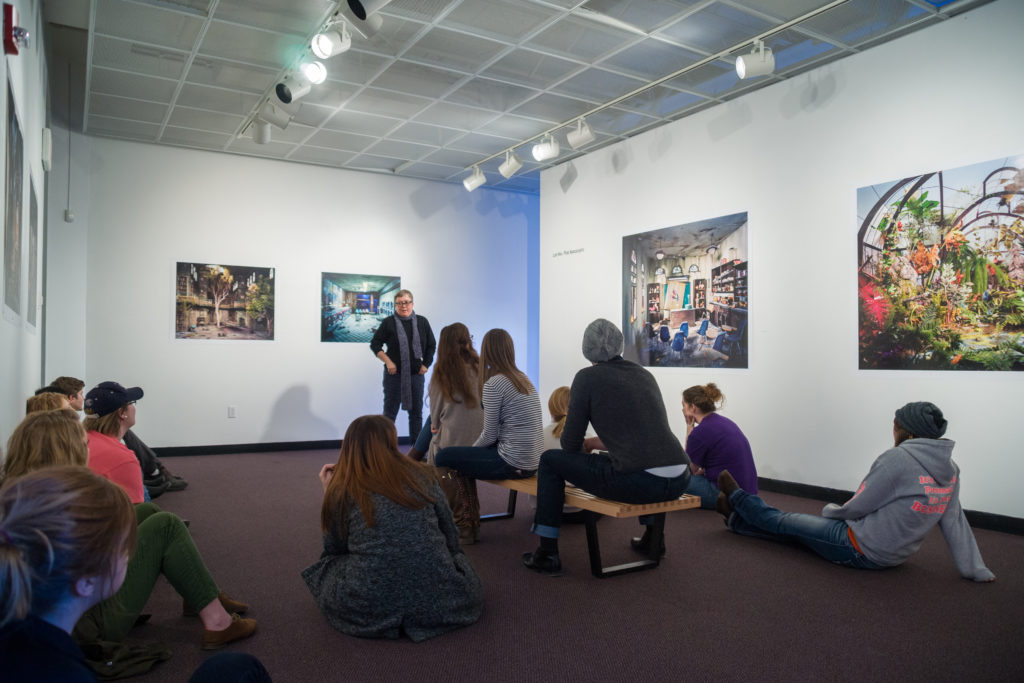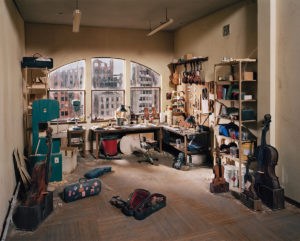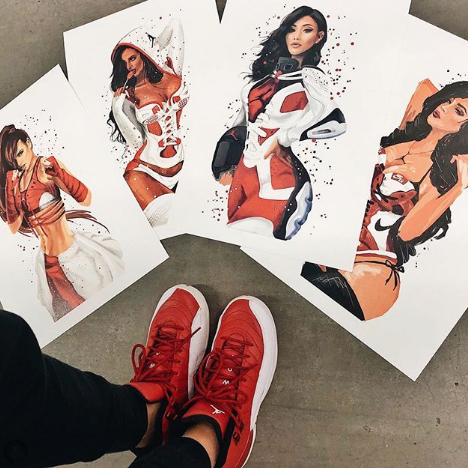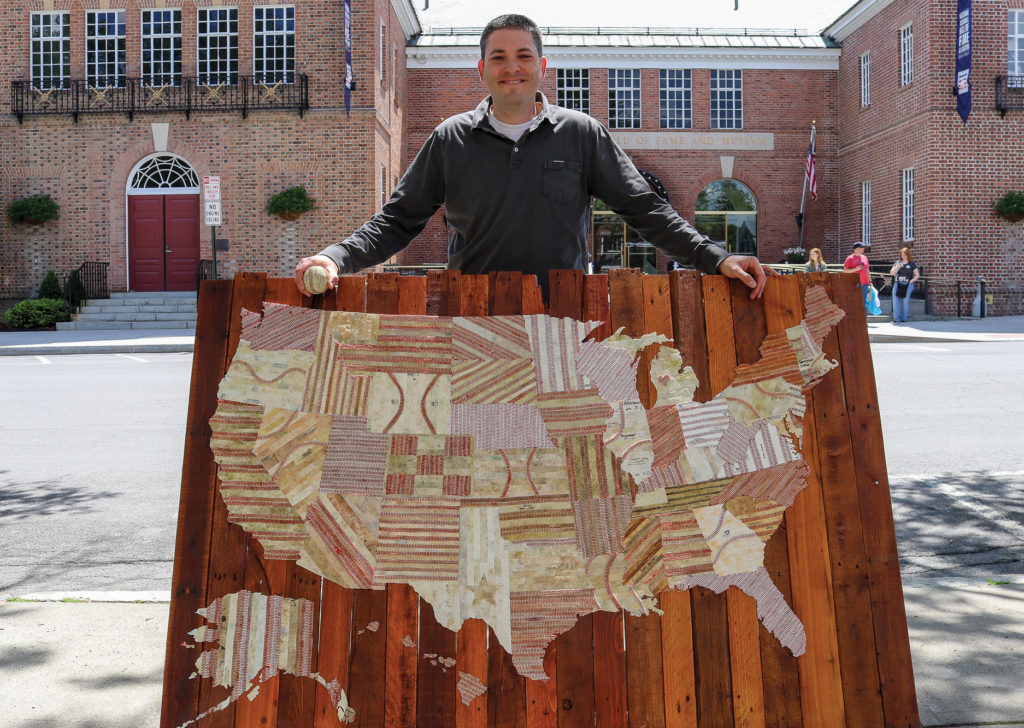The Truman Alumni Association offers free automobile decals for alumni to help promote the Bulldog spirit around the nation. To order your free decal, update or verify your information at update.truman.edu. The decal will be mailed to the address you provide. Show your Bulldog spirit, and order your free decal today!
Author Archives: kbest
Join the Truman Alumni LinkedIn Group
The Truman State University Alumni Group on LinkedIn is a great way for Bulldogs to connect professionally. Join the group today and make new connections, find career opportunities, post open positions and share your professional achievements with the Bulldog community.
Reunion Services
The Truman Alumni Office is here to help you plan your next on-campus reunion! A new program offered by the Office of Advancement will provide planning resources for groups wanting to host reunions on campus. There is no better way to connect to the University and to your affinity groups than to host an on-campus reunion. The Alumni Office is committed to helping you rekindle warm memories, reunite with familiar faces and reconnect classmates, faculty, staff and new friends. The Reunion Services program assists with planning on-campus events by helping secure locations, working with on-campus catering and promoting the event through mass email and website. The Alumni Office is also happy to provide Truman swag for attendees. Interested in planning an on-campus reunion? Learn more about Truman Reunion Services at truman.edu/alumni-donors/reunion-services.
The Arts
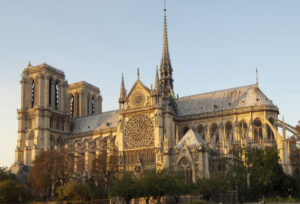 As Notre-Dame burned in April, the world watched. Network television interrupted regularly scheduled programming in favor of continuous coverage. A structure in existence for more than 800 years being decimated on live television is the kind of out-of-the-ordinary event that makes people stop and pay attention. By most reasonable standards, the cathedral was already considered old when America was discovered. It was the site of Napoleon’s coronation. It survived the French Revolution and two world wars. Its apparent demise was rightfully a where-were-you-when moment, but something made it larger than just a dark day for the country of France or the Catholic Church. Nearly every journalist covering the event made mention of the art and artifacts housed inside, and many more noted that the structure itself is a masterpiece. People from all walks of life, no matter their nationality or religious affiliation, could relate to that aspect of the story. There is a reason Notre-Dame attracts some 14 million visitors a year. Even the most secular individuals can look at its stained-glass windows and see beauty, or respect the craftsmanship in its sculptural decorations. Musicians appreciate its massive pipe organ, and those without even a bit of architectural knowledge are awed by its ribbed vaults and flying buttresses.
As Notre-Dame burned in April, the world watched. Network television interrupted regularly scheduled programming in favor of continuous coverage. A structure in existence for more than 800 years being decimated on live television is the kind of out-of-the-ordinary event that makes people stop and pay attention. By most reasonable standards, the cathedral was already considered old when America was discovered. It was the site of Napoleon’s coronation. It survived the French Revolution and two world wars. Its apparent demise was rightfully a where-were-you-when moment, but something made it larger than just a dark day for the country of France or the Catholic Church. Nearly every journalist covering the event made mention of the art and artifacts housed inside, and many more noted that the structure itself is a masterpiece. People from all walks of life, no matter their nationality or religious affiliation, could relate to that aspect of the story. There is a reason Notre-Dame attracts some 14 million visitors a year. Even the most secular individuals can look at its stained-glass windows and see beauty, or respect the craftsmanship in its sculptural decorations. Musicians appreciate its massive pipe organ, and those without even a bit of architectural knowledge are awed by its ribbed vaults and flying buttresses.
One of the beautiful things about art is there are no boundaries. Medium, subject matter, message and intent are all limited only by the whims of the creator …
Few things have had a larger influence on the world than the arts. Art is ubiquitous, so much so that it is hard to encapsulate what is even meant by “the arts.” To some, it is the classical branches of painting, sculpture and architecture. Hardly anyone would argue a broader definition of art to include music, theatre, film, dance and literature. One of the beautiful things about art is there are no boundaries. Medium, subject matter, message and intent are all limited only by the whims of the creator, and the end result, whatever it may be, stands on its own. Good, bad, fantastic, awful – it is all relative to the individual. There is no right or wrong answer. A single painting has the ability to move some people to tears, while others might feel their dog could complete a better composition.
The relationship with the arts begins at an early age. Lullabies sooth babies to sleep. By the time those same children are toddlers they pictorialize the world they know and utilize the family refrigerator as their gallery. Tiny dancers bring works of art to life during recitals while proud parents film their routines to share through yet another medium with captive audiences at family reunions. After the kids have traded in the dance shoes, they spend their time enthralled with video games, putting in hour after hour on an elaborate distraction built by a team of graphic designers and computer scientists who devoted years of their lives to the project. By college, some of the more successful members of garage bands have moved on to actual paying gigs, and others finally work up the courage to try out their stand-up routine at the local open mic. Many people make the arts a lifelong pursuit, even if it is just a hobby – sometimes as consumers, other times as creators. They play an instrument, visit art galleries, spend hours binge watching a television series, participate in community theatre or sing in the church choir for no other reason than love for their chosen outlet.
Civilizations are often defined by their art. Mention of Egypt immediately brings to mind images of hieroglyphics featuring gods and pharaohs. Elaborate ink paintings, calligraphy on silk or paper, and woodblock prints are all associated with Japan. Even novices think of Italy when shown the works of Michelangelo or Da Vinci. This concept also applies to humanity writ large. When the Voyager spacecrafts launched in 1977 they included phonograph records featuring sounds and images indicative of life on Earth. Among the musical selections were works by Bach, Mozart, Beethoven and Stravinsky, along with more contemporary songs by Blind Willie Johnson and Chuck Berry. Art is so important to humanity some felt it needed to be one of the first things extraterrestrials should know about Earth. It is possible an alien creature will one day form its first opinion about the planet based on “Johnny B. Goode.”
“Human beings have always been creating art in some form or fashion. I feel it is an innate part of who we are as a species,” said Akela Cooper (’03).
One of the countless University alumni who have gone on to a career in an artistic field, Cooper is a television and film writer and executive producer. Her credits include “Luke Cage,” “American Horror Story,” “Grimm” and “The 100.”
“The ability to entertain people, to emotionally affect them, is a great responsibility because art and entertainment have the potential to influence culture and even change minds. Hopefully for the better,” Cooper said.
Almost everyone has something that resonates with them …
Art means different things to different people, but the influence it has can certainly be profound. Almost everyone has something that resonates with them, whether it is the book they read over and over, the movie that inspired a career change or the song they share with their significant other.
Some previous methods of thinking may have viewed the arts as solely a pleasurable pursuit, lacking in the ability to make substantive contributions to the world. Starting sometime in the 1990s, many in education circles rallied behind the idea of STEM, which stands for science, technology, engineering and math. The belief was schools should encourage those aspects of education to make graduates more valuable in the workplace. Statistically speaking, there is no denying that logic. There are only so many spots in the London Philharmonic or the New York City Ballet, and a student is far more likely to be needed in a field where a solid grasp of science, technology, engineering or math would be useful.
However, while the STEM disciplines are certainly valuable, the philosophy behind that take on education has been revisited in recent years. Advances occur so rapidly now that technical knowledge alone can quickly become obsolete. Creative skills contribute to problem solving, or the seamless integration of concepts for practical use. Art and design can go hand in hand with technology (Apple, anyone?) and therefore many in the education industry have added an A into those critical fields of study, turning STEM to STEAM.
“There is a lot of value to STEAM education,” said Sarah Berke, assistant professor of biology. “While the arts represent many things, I like to sum it up as creativity and innovation. Those are central to STEM, and without them we are not successful.”
Berke is a leader in the Kirksville STEAM Alliance, a collaborative network of educators, business affiliates and organizations that inspires interest and facilitates activity in science, technology, engineering, arts and mathematics careers to generate and retain a robust workforce in the region. She sees how the relationship between STEM and the arts goes both ways. Not only does infusing creativity help make the original disciplines better, it also opens them up to more people.
“The inclusion of the arts allows us to reach more students, those that are perhaps scared of STEM, and show them how to appreciate or see the importance of STEM through art,” Berke said.
It is human nature to create and consume art.
As valuable and necessary as traditional career paths can be, they are not always the answer. Laura McHugh (’96) earned a degree in creative writing, but wanted the security of a stable job and income. She added a bachelor’s degree and master’s degree in tech-related fields, however, the stability she sought was not there in the long run.
“The arts seemed too risky as a career path, so I spent 10 years working in tech,” she said. “When I lost my job in the recession, I decided to pursue the one thing I was most passionate about: writing. I knew I’d regret it if I never tried.”
Doing what she loved paid off for McHugh, literally. Today, she is an award-winning, international bestselling author with three novels to her credit.
“Our world is so much richer thanks to the creative contributions of artists,” she said. “Try to imagine life without music, stories and visual arts to inspire us, entertain us, comfort us, expose us to different perspectives.”
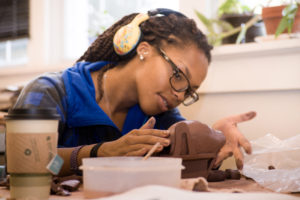 Putting aside the philosophical debate of whether life imitates art or art imitates life, there is no denying art is intrinsically valuable. Art for the sake of art serves a purpose. It is human nature to create and consume art. Not only does it entertain and help to pass the time, it affects each person in their own way. That alone makes it worthwhile.
Putting aside the philosophical debate of whether life imitates art or art imitates life, there is no denying art is intrinsically valuable. Art for the sake of art serves a purpose. It is human nature to create and consume art. Not only does it entertain and help to pass the time, it affects each person in their own way. That alone makes it worthwhile.
“Studying any art form in school or in life is important because it gives you a greater understanding of humanity and our place in the world,” said opera singer and University alumnus Dominic Armstrong (’02).
Since his graduation from Truman, Armstrong has established himself internationally as an artist of superb and distinguished musicality and characterization. He has taken the stage at Carnegie Hall in New York City and many other theatres the world over, but he knows full well the struggles of a career in the arts. Rejection, along with inconsistency in income and routine, are just a few of the things that can cause aspiring artists to question their choices.
“The world we live in seems to get more and more commercial with every passing year. If you can’t find a way to make your passion into a ‘marketable skill’ it feels as though the modus operandi is to say ‘well, if you aren’t making money at it, it must not be valuable,’” Armstrong said. “I reject this view. My hope is that our society can return to a position of learning for learning’s sake. Learning a new skill, practicing a new passion, reading a play, listening to an opera or a symphony – just learning – is a benefit to you and therefore the world around you. When you sing a song, the text becomes more meaningful. When you speak text from a play, you empathize with a character, which helps you reexamine predetermined beliefs. Art gives you a better understanding of life, and society is better for it.”
Anyone who puts their passion into a project, or who takes an idea in their head and makes it a reality in the world is, in a sense, an artist. As society progresses and there are more means to create, there will also be an expanding definition as to what constitutes art. Arguably, the main function of art is for it to be experienced, to evoke an emotion or elicit a reaction. Rather than try to categorize it, to try and figure out what is good art or what practical purpose it may serve, the wiser choice might be to just take a moment to enjoy it.
The Past Meets the Future
Lori Nix uses some older approaches in her art to create thought-provoking, contemporary pieces.
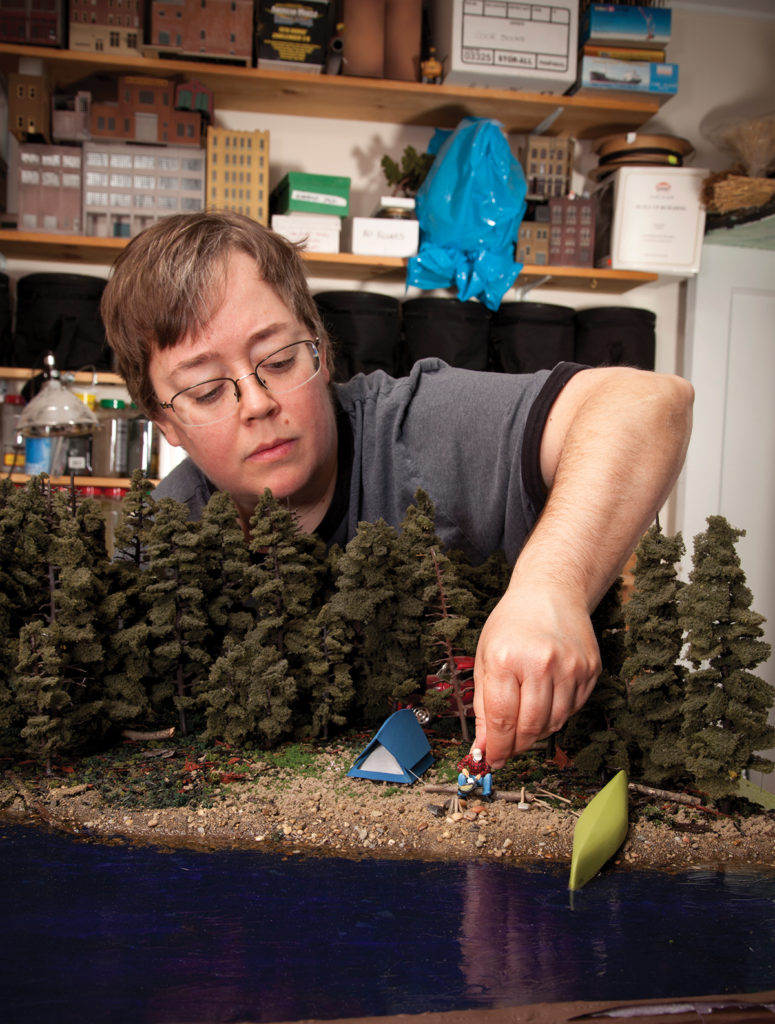 Lori Nix (’93) isn’t the first artist to work in her preferred mediums, but she has spent her adult life carving out a unique genre that has earned her a successful career and multiple accolades.
Lori Nix (’93) isn’t the first artist to work in her preferred mediums, but she has spent her adult life carving out a unique genre that has earned her a successful career and multiple accolades.
Nix is a photographer who also builds dioramas for video, film advertising and print media. She and her partner, Kathleen Gerber, create complex miniature landscapes and interiors ranging in size from as small as a shoebox to as large as a coffee table. Months of construction precede weeks of photography. Some of the projects are commissioned for clients all across the U.S. and abroad, but Nix and Gerber also create their own fine art for display.
In a time when so much art, particularly photo-based projects, is done digitally, or with elaborate use of Photoshop, Nix has a very tactile approach to her profession. Even the photography component of her work has varied from the industry standard. She was still using film until about four years ago before making the switch to a digital camera.
“I have been slow to embrace technology,” she said. “I still build everything by hand rather than create my images digitally. Honestly, I’m still very old school in this way.”
 In 2014, Nix received a Guggenheim Fellowship, awarded to those individuals who, according to the foundation’s website, “have already demonstrated exceptional capacity for productive scholarship or exceptional creative ability in the arts.” Her work has graced the cover of Time magazine and can be found at galleries around the world, including the Smithsonian American Art Museum in Washington, D.C. Before moving to her current home in Cincinnati, Ohio, Nix was a longtime resident of Brooklyn, N.Y., where she was a two-time recipient of an individual artist grant from the New York Foundation for the Arts.
In 2014, Nix received a Guggenheim Fellowship, awarded to those individuals who, according to the foundation’s website, “have already demonstrated exceptional capacity for productive scholarship or exceptional creative ability in the arts.” Her work has graced the cover of Time magazine and can be found at galleries around the world, including the Smithsonian American Art Museum in Washington, D.C. Before moving to her current home in Cincinnati, Ohio, Nix was a longtime resident of Brooklyn, N.Y., where she was a two-time recipient of an individual artist grant from the New York Foundation for the Arts.
“I cannot imagine my life without art,” Nix said. “I think about new projects hourly, daily. I even roll over in the middle of the night thinking about art.”
Her passion is apparent in the three degrees Nix earned from Truman: Bachelor of Fine Arts degrees in photography and ceramics, along with a Bachelor of Arts in art history. She also added a Master of Fine Arts degree from Ohio University.
 As a child, Nix was always playing with crayons, pens and coloring books, and she signed up for every art class she could in high school. Coming to Truman from St. Joseph, Mo., her practical side initially won out when it was time to pick a major. She originally planned to study accounting before making the switch to ceramics.
As a child, Nix was always playing with crayons, pens and coloring books, and she signed up for every art class she could in high school. Coming to Truman from St. Joseph, Mo., her practical side initially won out when it was time to pick a major. She originally planned to study accounting before making the switch to ceramics.
“I understand lines, color and texture more than numbers,” she said.
Still, Nix sees a substantive value in the arts, both in its ability to provide perspective and help write the first drafts of history.
“For me, the arts are like the ultimate soothsayer, able to reflect upon our times before we recognize what’s happening. The arts have a way of imparting complex ideas and feelings across space, time and language,” Nix said. “It teaches you to think critically and explore ideas, sometimes abstract, sometimes concrete, and find your own voice within them.”
Practice Makes Perfect
Anthony Cooperwood has made a living through music, mainly by being prepared when the right opportunities came along.
Good music usually has a flow to it wherein all of the parts come together so perfectly the listener never considers the hard work that went into creating it. On the surface, Anthony Cooperwood’s life appears to have some similarities, as if one serendipitous event after another simply led him to an interesting existence. The truth is, he put in a lot of effort to go from Grandview, Mo., to performing more than 4,000 times on three different continents as a musician, most notably with Cirque du Soleil.
Cooperwood came to Truman on a piano fellowship and earned three degrees before all was said and done, including two bachelor’s degrees in 1993 and a Master of Arts in Education degree the following year. When it was time to start his music career, he picked what he knew would be the most challenging location.
“I figured if I could succeed in New York City as a musician then I could succeed anywhere,” Cooperwood said. “Truman helped me get the knowledge and background, but New York shaped me into an adaptable tool to be used in a variety of situations by placing me in those situations.”
Interestingly enough, it was connections Cooperwood made in the small town of Kirksville that assisted him in the big city. A tip from local bluegrass queen Rhonda Vincent helped him get a job playing with former Bill Haley & The Comets guitarist Bill Turner. Cooperwood also supported himself by teaching piano lessons and playing in wedding and club bands.
“The music industry is not only the notes you play on the gig,” he said. “It is also the jobs you take that have nothing to do with music. It’s the people you interact with on a regular basis to build your network. It’s even the simple discipline of showing up on time and being prepared when you arrive to do what it is they are expecting and paying you to do.”
When Cooperwood landed a job as a substitute piano player for the Big Apple Circus in Manhattan, he shadowed the show one night in preparation. The other substitute piano player, whom he thought was great, made a few minor mistakes, and when Cooperwood heard the band director nonchalantly say “I’ll never use that guy again” it made him realize he needed to step up his game. Cooperwood immersed himself in preparation for the show, practicing along with recordings and randomly going through the entire production whenever he had the time. All that hard work paid off, and when he finally got the chance to sub he made the most of it. A composer who worked with Cirque du Soleil was in the audience during one performance and was so impressed she suggested an audition.
Based in Montreal, Canada, Cirque du Soleil is the largest theatrical producer in the world. In the roles of keyboardist, bass guitarist and backup conductor for the “Dralion” production, Cooperwood traveled extensively across North America and Europe.
“I had the itch to get moving and was glad to stretch my legs and talents with the Cirque,” he said. “We were completely free from the 9-5 life within the towns and cities we worked. We made friends and experienced travel sites I’d only seen before on television and in books.”
Much like he felt the call to hit the road, Cooperwood also knew when it was time to leave it. Around 2005, he had the urge to start a family, and he settled down with a woman in Montreal. The couple have a child together, and while Cooperwood isn’t touring the world anymore, he still performs locally and is sharing his love of music with the next generation. Cooperwood is the director of bands at Rosemount High School. His advice for aspiring musicians is simple.
“Practice,” he said. “And when you are done, practice some more.”
Course Correction
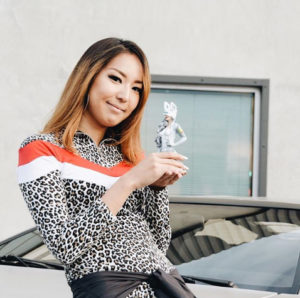 Reina Koyano abandoned her dream job and has found success and inspiration in unusual places.
Reina Koyano abandoned her dream job and has found success and inspiration in unusual places.
As a child in Tokyo, Japan, Reina Koyano enjoyed making personalized birthday cards for friends and family. The joy she saw on their faces when they realized the effort she put in specifically for them is what made her want to be a designer. While Koyano (’12) was studying visual communications at Truman, she dreamed of living a charmed life in Manhattan working at an ad agency. She eventually got what she considered to be her dream job at an agency in Los Angeles where she worked on projects for major clients like Toyota, AT&T and State Farm. She achieved the success she wanted, and at a fairly young age. So, she quit.
“I did all kinds of things there, from designing print and web ads, to art directing photo shoots, to designing an entire internship program for the company,” she said. “But, I also learned that not everything I did was exactly like what I thought it would be like to work in ad agencies. It was hard to let go. It was a dream job that I had since I was very young.”
Koyano applied for a job at Snapchat, never actually planning to hear back from the social media giant. She did, and she is approaching her fourth year with the company. Her illustrations and filters have earned social media shout outs from celebrities and supermodels, and working with talented designers has reaped other benefits.
“Having this environment has definitely been the fuel for my personal works,” she said. “It’s important to have a great creative career, but it’s equally – or perhaps more – important to own a personal project where you have the complete freedom to express yourself and your creative philosophy.”
For Koyano, that has primarily meant creating her own line of drawings featuring female figures, with the inspiration coming from, of all places, sneakers.
“I see sexiness in sneakers. Maybe it’s the smooth, curving silhouettes, or it could be the way the laces tighten up your feet like a chic corset,” she said. “I view sneakers the way I see sports cars. Their immaculate contours and luminous gloss are undeniably captivating, whether you’re into cars or not.”
Part pin-up art, part superhero drawing, Koyano’s “Sole Fatale” series of strong, female figures now includes more than 30 pieces and has earned her international attention. Her work has been featured in publications in Japan and Australia, and been on display in Portland, London and San Francisco. A video for Champs Sports featuring her has more than 100,000 views on YouTube. In 2016, when Koyano created an illustration inspired by the Nike Air Mag from the film “Back to the Future,” it almost literally blew up her phone.
“My phone shut down because there were too many notifications that I couldn’t turn off,” she said. “I was shocked to see how my little hobby was received, and that only motivated me to draw more and be more adventurous with it.”
The way things have gone so far in her career, it is hard to say what is next for Koyano. She has gained experience in advertising and the tech industry, and she would love to put her skills to use in ways that either help young adults in education or empower women.
“I truly believe that design is not just something we do to make things ‘look pretty.’ Designers are problem solvers that can make things smarter and more efficient,” she said.
A Way to Pass the Time
Like many kids, Nate Rueckert (’03) was obsessed with baseball. He played countless hours of catch with his father, went to see his hometown heroes at Busch Stadium and even tried to emulate them on the field during little league games. He was talented enough to play at the collegiate level and did so for three seasons while pursuing his Bachelor of Science degree in accounting at Truman. It is rare to be included in the Baseball Hall of Fame without a day spent in the majors, but Rueckert found a way to make it happen.
A labor of love has evolved into a profitable side business for Rueckert, and it earned him a spot in the sport’s most hallowed halls. In 2017, a five-foot wide map of the United States he crafted entirely from used baseballs debuted in Cooperstown.
“There’s just something awesome about taking something tattered, torn, used, forgotten – these baseballs that have definitely seen better days, ones that most coaches would just throw away – and just turning them into beautiful pieces of art,” he said.
Being an artist was never really part of the plan for Rueckert. Indeed, his day job remains far more analytical. After working in public accounting at Ernst & Young, Rueckert and his wife, Micaela (’05), are raising their three daughters in Sioux Falls, S.D., where he is a senior external financial reporting consultant for Wells Fargo Advisors. He works four days a week with the fifth day dedicated to his business, the Baseball Seams Co., which he started in 2001 while he was still a student.
Inspiration can come from a variety of places, and for the Baseball Seams Co., its origin is rooted in the wake of tragedy. Rueckert remembers vividly the events of 9/11. He skipped his classes and was glued to the television, trying to comprehend the news of the day. Like so many other Americans, he felt hopeful the following month when he saw the president throw out the first pitch during the World Series.
“For me, it was a moment that transcended sports,” he said. “For whatever reason, the idea to make an American flag out of old, tattered baseballs popped into my head.”
Rueckert has been making original works of art using baseballs as his medium ever since. The project that was displayed in the Baseball Hall of Fame was actually a two-year undertaking that evolved into a book.
After crowdfunding more than $30,000 through Kickstarter and sponsorships, Rueckert worked with a baseball writer to interview individuals from each state and share their inspirational stories. Baseballs they donated were used to create the map, and their stories were paired with artistic photos and compiled in a hardback coffee table book available on the company website, as well as the Baseball Hall of Fame museum shop.
BaseballSeamsCo.com is far from any run-of-the-mill sports page. It is equal parts art, nostalgia and patriotism. Over the years Rueckert has learned the true value of the game. It is more than statistics or championships. It is something so simple children can play it in the backyard, yet meaningful enough it can help heal a nation in a time of crisis. It is America’s pastime and, for many, a way of life. Rueckert’s company is less about a paycheck and more about staying connected to something he loves while using it as a backdrop to share values he feels are important.
“The memories you have in your childhood – it brings out the love you have for your country, the love you have for your faith,” he said. “That’s what I try to convey in my artwork – connecting baseball to something else that you really feel passionate about.”
Bulldogs Earn Overall GLVC Sportsmanship Award
For the second time in three years, the Truman Athletics Department captured the GLVC James R. Spalding Sportsmanship Award.
The award is based on individual sport coach rankings of their top three teams that displayed the best sportsmanship throughout the seasons. The Bulldog football team, softball team and men’s outdoor track and field team were respective team sportsmanship winners.
Truman joins Bellarmine (Ky.) as only the second league school to win the award multiple times in the 12 years of the conference-wide award.
In addition, Taurin Hughes (men’s basketball) and Savvy Hughes (volleyball) were the Bulldog individual sportsmanship winners out of the 18 Truman student-athletes nominated by their respective sport for the honor.
Softball’s Dynamic Duo to Walk Away Together
 For the Truman softball program, it may not get better than Erin Brown and Christa Reisinger.
For the Truman softball program, it may not get better than Erin Brown and Christa Reisinger.
Brown, who resigned following the season, leaves as the program’s all-time winningest coach, and it isn’t even close. In her 13 seasons at the helm of the Bulldogs, the Truman alum racked up 348 wins (348-302), nearly 200 more than the next-closest mark in the record book. Brown led the Purple and White to five NCAA tournaments, which is good for nearly a third of the school’s 17 all-time appearances.
During Brown’s 13 years in Kirksville as the head coach, her last four were quite a bit easier because of Reisinger. She graduates and steps away from the program as arguably its most decorated player ever. In just a small portion of her long list of accomplishments, Reisinger is a three-time GLVC Player of the Year, two-time Academic All-American, two-time Athletic All-American, eight-time GLVC Player of the Week and school record holder for six major categories.


